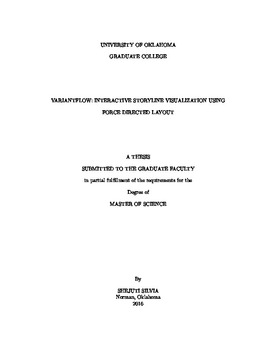| dc.description.abstract | The study of literature is changing dramatically by incorporating new opportu- nities that digital technology presents. Data visualization overturns the dynamic for literary analysis by revealing and displaying connections and patterns be- tween elements in text. Literary scholars compare and analyze textual variations in different versions of a lost original text and work to reconstruct the original text in the form of a critical edition. A critical edition notes textual variations in extensive footnotes, collectively called a critical apparatus. Information in the apparatus is of great interest to scholars who seek to explore complex relation- ships between text versions. Motivated by application to classical Latin texts, we adapted the storyline technique to visualize a critical apparatus. The visualiza- tion facilitates guided discovery of similarities and dissimilarities between prior text versions, which are difficult to detect and reason about with traditional deep reading and spreadsheet-based methods.
Storyline visualizations help users understand and analyze the interactions between entities in a story and explore how entity relationships evolve over time. Typical design considerations in existing storyline techniques include minimiz- ing line crossing and line wiggling, which are computationally intense problems. Generating storyline layouts in real time is a substantial challenge to interactive visualization. Existing storyline techniques support limited user interaction dueto the high cost of layout. We contribute a force directed layout algorithm that dynamically reflows storyline layouts with best effort response to internal and coordinated interactions. We anticipate that the characteristics of our layout algorithm will allow for graceful response to a wide variety of interaction types, speeds, and patterns. We conducted a user study to evaluate the legibility of our storyline layout after convergence. The evaluation results demonstrate that most users can accurately complete a wide variety of visual metaphor interpretation, reading, and pattern recognition tasks within 20 seconds. | en_US |
